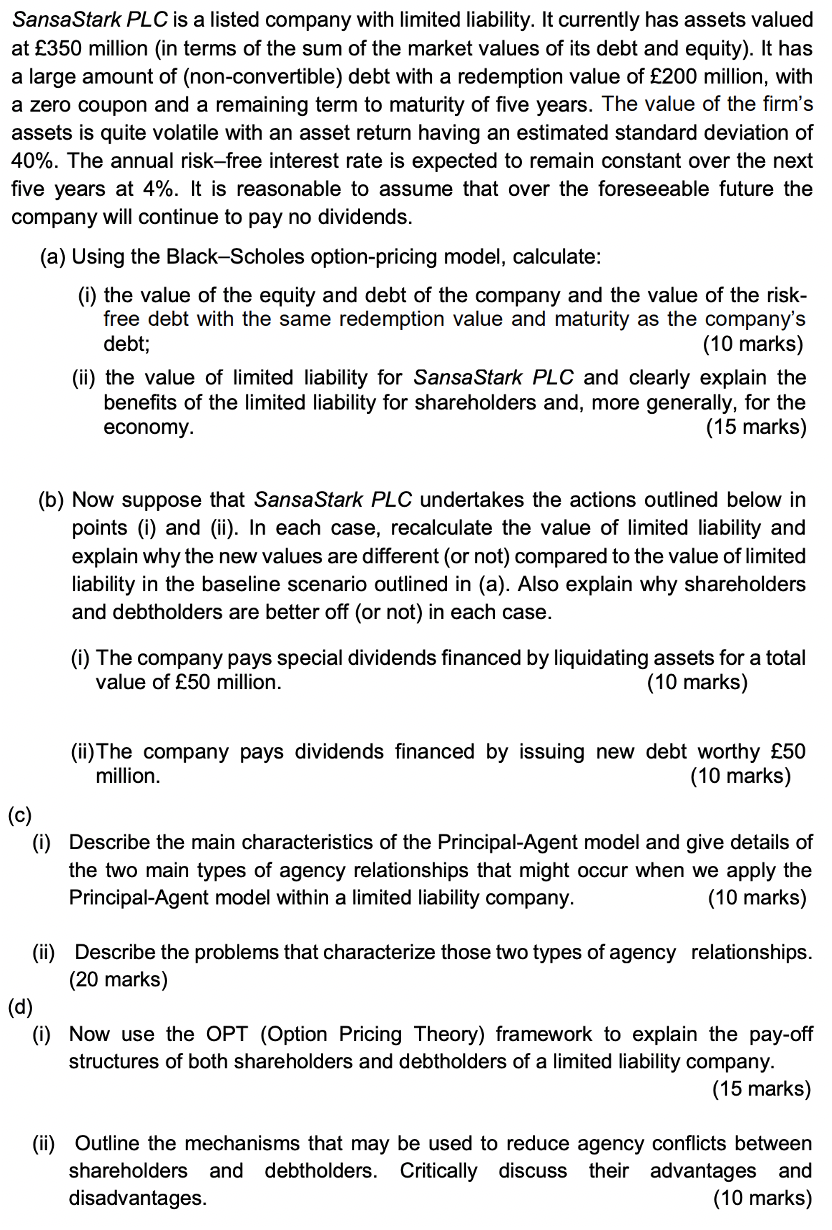
Sansa Stark PLC is a listed company with limited liability. It currently has assets valued at 350 million (in terms of the sum of the market values of its debt and equity). It has a large amount of (non-convertible) debt with a redemption value of 200 million, with a zero coupon and a remaining term to maturity of five years. The value of the firm's assets is quite volatile with an asset return having an estimated standard deviation of 40%. The annual risk-free interest rate is expected to remain constant over the next five years at 4%. It is reasonable to assume that over the foreseeable future the company will continue to pay no dividends. (a) Using the Black-Scholes option-pricing model, calculate: (i) the value of the equity and debt of the company and the value of the risk- free debt with the same redemption value and maturity as the company's debt; (10 marks) (ii) the value of limited liability for Sansa Stark PLC and clearly explain the benefits of the limited liability for shareholders and, more generally, for the economy (15 marks) (b) Now suppose that Sansa Stark PLC undertakes the actions outlined below in points (i) and (ii). In each case, recalculate the value of limited liability and explain why the new values are different (or not) compared to the value of limited liability in the baseline scenario outlined in (a). Also explain why shareholders and debtholders are better off (or not) in each case. (i) The company pays special dividends financed by liquidating assets for a total value of 50 million. (10 marks) (ii) The company pays dividends financed by issuing new debt worthy 50 million. (10 marks) (c) (1) Describe the main characteristics of the Principal-Agent model and give details of the two main types of agency relationships that might occur when we apply the Principal-Agent model within a limited liability company. (10 marks) (ii) Describe the problems that characterize those two types of agency relationships. (20 marks) (d) (i) Now use the OPT (Option Pricing Theory) framework to explain the pay-off structures of both shareholders and debtholders of a limited liability company. (15 marks) (ii) Outline the mechanisms that may be used to reduce agency conflicts between shareholders and debtholders. Critically discuss their advantages and disadvantages. (10 marks)







